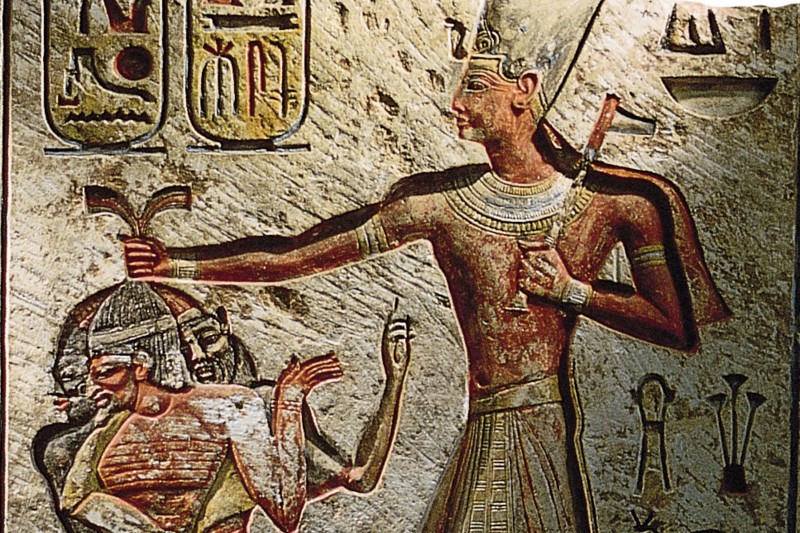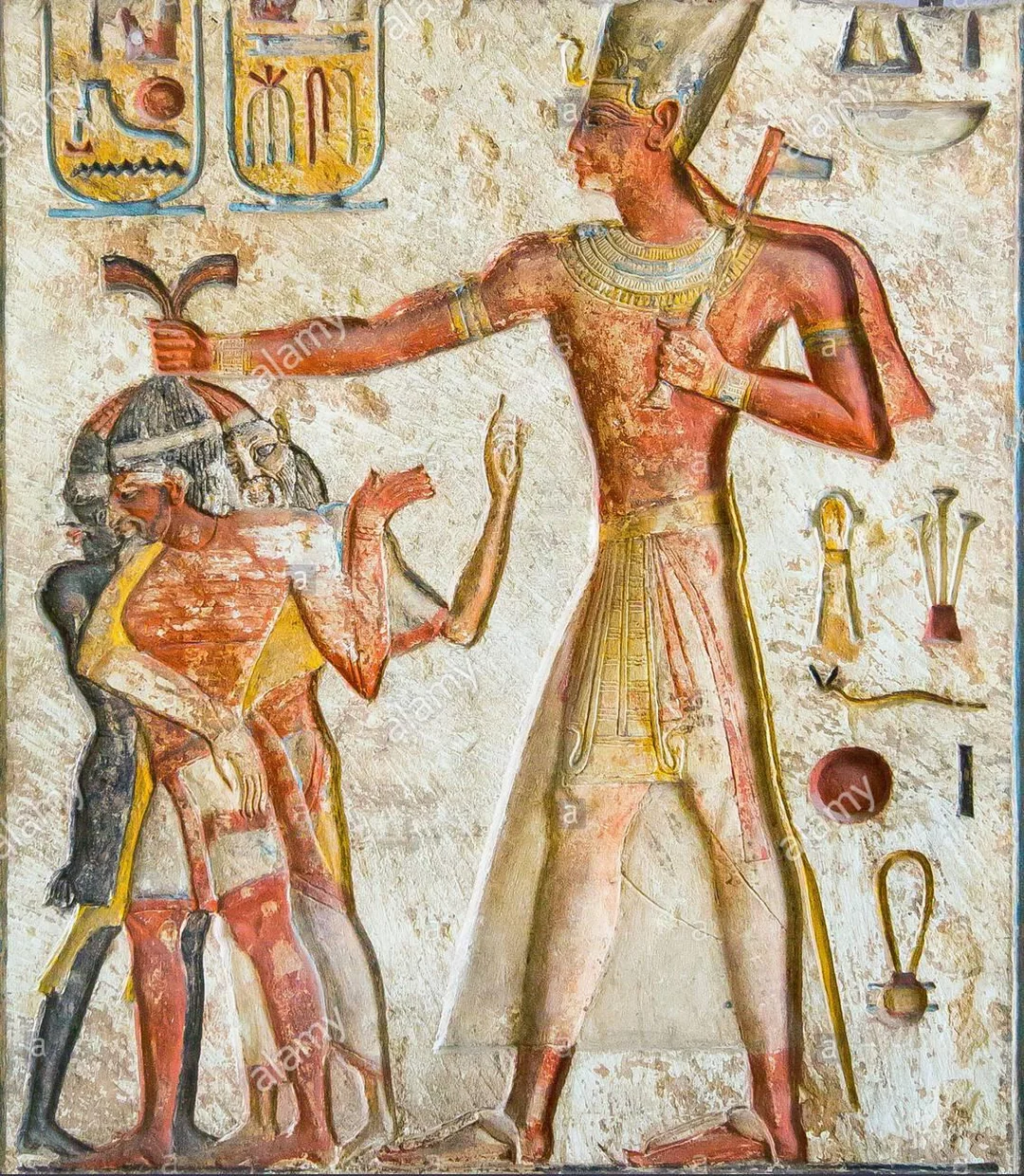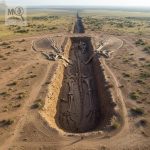Relief of King Ramses II killing enemies of Egypt

A limestone relief from Memphis, Egypt, depicts King Ramses II triumphing over the enemies of Egypt — a Nubian, a Libyan, and a Syrian. This dramatic artwork, now displayed in the Cairo Museum, emphasizes the pharaoh’s power, military prowess, and divine authority.

Ramesses II, also known as Ramesses the Great, was one of ancient Egypt’s most powerful and celebrated pharaohs. He ruled during the 19th Dynasty, from around 1279 to 1213 BCE, and his reign marked a pinnacle of Egyptian prosperity, architecture, and military strength.

Ramesses II led several successful military campaigns, most famously the Battle of Kadesh against the Hittites, which resulted in the world’s first known peace treaty.

He was also a prolific builder, commissioning grand temples and monuments such as the Ramesseum and the magnificent Abu Simbel temples in Nubia, carved directly into the cliffs. His image and name were inscribed across Egypt to emphasize his divine kingship and enduring legacy. Living to about 90 years old and fathering over a hundred children, Ramesses II became a symbol of longevity, power, and divine rule—earning him the title “The Great Ancestor” among later Egyptians.











